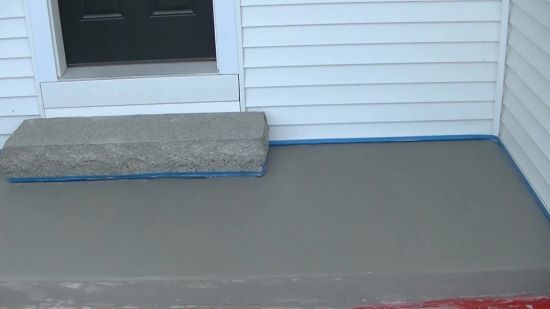Spalling sometimes incorrectly called spaulding or spalding is the result of water entering brick concrete or natural stone.
Cause of concrete patio spalling below siding.
Corrosion of embedded reinforcing steel because the corrosion products rust occupy more volume than the original steel and the resultant pressure spalls the concrete.
What causes spalling and how to prevent it spalls can appear because the rebar has been exposed and humidity and water have begun to rust the rebar or because the concrete joints were improperly built.
Sprinkling the surface of the concrete with water to extend finishing time.
They include the improper placement of concrete and its reinforcing electrochemical galvanic reactions between embedded metals within the concrete matrix and corrosion of embedded reinforcing steel due to exposure to water and or chemicals.
And not curing the concrete properly after installation.
Attribute blistering to three principal causes.
Pouring concrete up onto siding is neither wise nor noble.
Spalling tends to be most common in cold climates when de icing chemicals are applied or when seasonal freeze thaw cycles damage the concrete.
Inadequate mixing after addition of calcium chloride makes the concrete color even more irregular or blotchy.
30 50 and 100 sieves resulting in a sticky or tacky concrete that can become more easily sealed when floating or finishing it at any early age.
Concrete efflorescence is a very common problem on concrete especially decorative concrete.
Calcium hydroxide or lime is formed by the hydration reaction between portland cement and water.
It s also known as flaking especially in limestone.
Fire exposure due to which free water in concrete change to stem and create internal expansive pressure in concrete consequently spall off concrete.
Get rid of concrete spalling by resurfacing the concrete if your driveway surface has spalling concrete the most likely cause is an installation mistake.
Causes of concrete spalling.
It forces the surface to peel pop out or flake off.
Common mistakes include adding too much water to the mix to make it easier to pour.
Over the course of a winter or over the course of years as the internal pressure.
When the temperature drops below freezing moisture in the concrete tends to expand creating internal pressure.
A frequent reason behind a darkened concrete appearance is the addition of calcium chloride to accelerate the setting time of concrete see photo 1 especially when calcium chloride dosages approach 2 by weight of cement.
An excess amount of entrapped air held within the concrete by a high percentage of material passing the 600 µm 300 µm and 150 µm no.



























